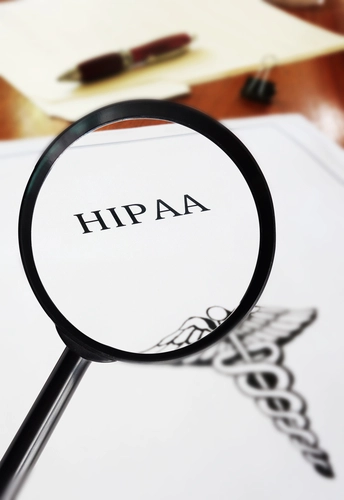Follow HIPAA Requirements--Even in Emergencies

Know what information you can legally share, and who can receive it.
Do you know your patients’ HIPAA privacy rights in emergency situations? How about your obligations to public health reporting? Here’s what you need to know so an emergency situation doesn’t become a HIPAA breach disaster.
Citing the Ebola virus outbreak in the fall, the HHS Office for Civil Rights (OCR) released guidance on HIPAA compliance in emergency and public health situations. The guidance explains the ways in which covered entities (CEs) may share protected health information (PHI) under the HIPAA Privacy Rule in emergency situations.
Know Your State’s Requirements
“Federal laws and regulations permit, and many state laws require, the disclosure of patient information without a patient’s consent or authorization for certain public health activities,” pointed out partner attorney Laurie Cohen in an Oct. 29 blog posting for the law firm Nixon Peabody LLP.
According to the OCR guidance, the HIPAA Privacy Rule allows CEs to disclose necessary PHI without individual authorization:
Stick to the ‘Minimum Necessary’
But when you’re disclosing PHI to a public health authority, keep in mind that the disclosure is subject to HIPAA’s “minimum necessary” standard, Cohen reminded. The standard provides that the CE will limit the PHI disclosed to the amount reasonably necessary to achieve the purpose of the disclosure.
According to HIPAA, when making disclosure to public health officials, a CE “may rely, if such reliance is reasonable under the circumstances, on a requested disclosure as the minimum necessary … if the public official represents that the information requested is the minimum necessary.”
Example: A CE may rely on representations from the CDC that the PHI requested by the CDC about all patients exposed to or suspected or confirmed to have Ebola is the minimum necessary for the public health purpose, OCR says.
Remember: Also, don’t forget to include the disclosure in the accounting of disclosures of patients’ PHI — this HIPAA requirement includes disclosures for public health purposes, Cohen stated.
Public Health Reports: Safeguard Patients’ Privacy Rights
Although HIPAA permits disclosures of PHI without patient authorization for public health activities, you “cannot disregard a patient’s right to privacy in those cases where a patient’s information has been the subject of a public health report,” Cohen warned.
“Put another way, the public disclosure of a patient’s information, including the identity of a patient, by a covered entity is not permissible even in cases where a public health report has been made and a public health official subsequently releases information about the patient as part of its public health surveillance, investigation or intervention,” Cohen explained. If you were to release a patient’s information, you would need to have a valid authorization signed by the patient or the patient’s authorized representative.
Consider Other Disclosures & Imminent Danger
The HIPAA Privacy Rule also allows you to “share patient information with anyone necessary to prevent or lessen a serious and imminent threat to the health and safety of a person or the public,” OCR notes. But even in “imminent danger” situations, you must still comply with applicable laws, such as state statutes, regulations or case law, and your own standards of ethical conduct.
When it comes to sharing a patient’s PHI with family members, friends and others involved in the individual’s care, you should try to get verbal permission or otherwise reasonably infer that the patient does not object, when possible in an emergency situation, OCR instructs. If the patient is incapacitated or not available, you can share PHI if your professional judgment is that doing so is in the patient’s best interest.
What’s more: You can also share PHI with disaster relief organizations like the American Red Crossfor the purpose of coordinating notification of family members or other individuals involved in the patient’s care, of the patient’s location, general condition or death, OCR notes. “It is unnecessary to obtain a patient’s permission to share the information in this situation if doing so would interfere with the organization’s ability to respond to the emergency.”
Understand the ‘Limited Waiver’
Finally, the HHS Secretary may provide a “limited waiver” of certain HIPAA Privacy Rule provisions under the Project Bioshield Act of 2004 and Section 1135(b)(7) of the Social Security Act. This waiver can occur when the U.S. President declares an emergency or disaster and the HHS Secretary declares a public health emergency.
In this case, the HHS Secretary may waive sanctions and penalties against a covered hospital that doesn’t comply with the following Privacy Rule provisions:
Caveats: According to OCR, if the Secretary issues this waiver, it applies only:
1. In the emergency area and for the emergency period identified in the public health emergency declaration;
Bottom line: Despite certain special allowances in emergency situations and public health considerations, you should never think that you can set aside HIPAA Privacy Rule protections during an emergency.
Resources: To read the OCR guidance, go to www.hhs.gov/ocr/privacy/hipaa/understanding/special/emergency/hipaa-privacy-emergency-situations.pdf. For more information on HIPAA in emergency situations, visit www.hhs.gov/ocr/privacy/hipaa/understanding/special/emergency/index.html.
2. To hospitals that have instituted a disaster protocol; and
3. For up to 72 hours from the time the hospital implements its disaster protocol, or until the Presidential or Secretarial declaration terminates (even if 72 hours has not elapsed).

